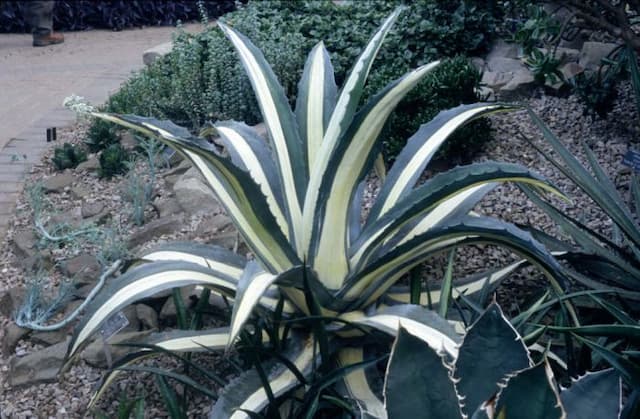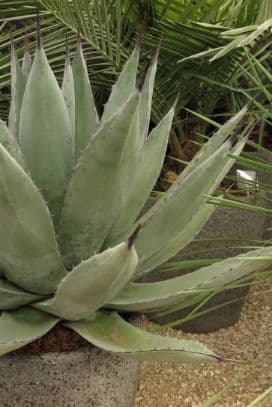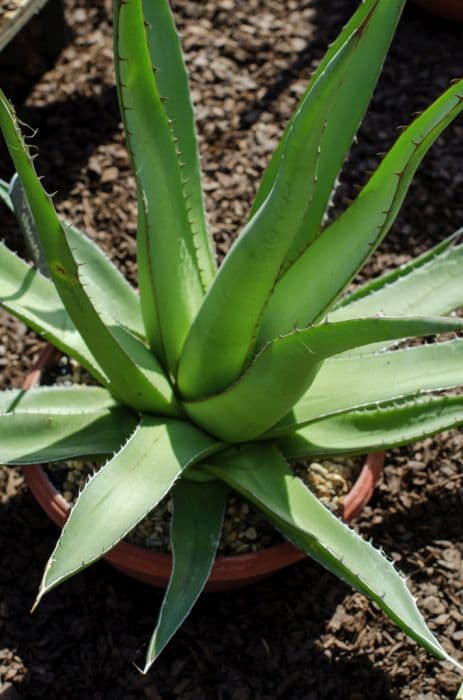Cabbage palm 'Southern Splendour' Cordyline 'Southern Splendour' (v)

ABOUT
'Southern Splendour' ultimately forms a small, palm-like tree, but initially the long, narrow, evergreen leaves form a dense clump at or near ground level. The foliage is olive green with broad pink margins and fine pink stripes. Mature plants may produce very large sprays of small, scented, pinky-white flowers in summer
About this plant
 Names
NamesSynonyms
Southern Splendour Cordyline, Southern Splendour Dracaena.
Common names
Cordyline 'Southern Splendour'
 Characteristics
CharacteristicsLife cycle
Perennials
Foliage type
Evergreen
Color of leaves
Variegated
Height
3-4 feet (0.9-1.2 meters)
Spread
2-3 feet (0.6-0.9 meters)
Plant type
Shrub
Hardiness zones
9
Native area
New Zealand
Benefits
 General Benefits
General Benefits- Ornamental Appeal: Adds a splash of color with its pink, white, and green variegated leaves.
- Low Maintenance: Requires minimal care once established, ideal for busy gardeners.
- Drought Tolerance: Can withstand periods of low water availability once fully grown.
- Versatility in Landscaping: Suitable for a variety of garden styles, including tropical and contemporary themes.
- Pest Resistance: Generally resilient against common garden pests.
- Evergreen Foliage: Maintains its foliage all year round, providing continuous interest in the garden.
- Adaptability: Can grow in a range of soil types, as long as they're well-draining.
- Urban Tolerance: Capable of growing in urban environments where other plants may struggle.
- Outdoor and Indoor Use: Can be grown in the garden or as a houseplant, offering flexibility in placement.
- Longevity: A perennial plant that can live for many years with proper care.
 Medical Properties
Medical PropertiesThis plant is not used for medical purposes.
 Air-purifying Qualities
Air-purifying QualitiesThis plant is not specifically known for air purifying qualities.
 Other Uses
Other Uses- Craft Material: The long, colorful leaves of the Cordyline can be used in weaving projects such as making baskets, mats, or even decorative wall hangings.
- Holiday Decorations: The vibrant foliage can be incorporated into holiday wreaths and garlands to add exotic flair to traditional décor.
- Culinary Garnish: The leaves can be used as a decorative garnish on food platters, adding a tropical touch to the presentation.
- Dye Production: The plant's leaves, when boiled, can produce a natural dye that can be used in textile and craft projects.
- Privacy Screening: The Cordyline, when planted densely, can act as a natural privacy screen for patios or outdoor dining areas.
- Theme Gardens: They are an excellent addition to theme gardens such as safari or tropical paradises due to their striking appearance.
- Floral Arrangements: Stems and leaves of the Cordyline can be used to add structural interest and a splash of color in floral arrangements.
- Film and Theater: The plant can be used as a prop to create tropical or otherworldly scenes in film and stage productions.
- Photography Prop: The plant provides a lush backdrop for portrait photography or can be used to add depth and interest to still-life compositions.
- Educational Tool: The plant can be used in botanical studies to teach about plant morphology and the diverse adaptations of foliage in different climates.
Interesting Facts
 Feng Shui
Feng ShuiThe Ti plant, which is the common name for Cordyline 'Southern Splendour', can be utilized in Feng Shui to enhance the wood element due to its lush green foliage. As such, it is considered to promote growth, vitality, and positive energy, and can be placed in the wealth or health sectors of a home or office to encourage prosperity and well-being.
 Zodiac Sign Compitability
Zodiac Sign CompitabilityThe Ti plant is not used in astrology practice.
 Plant Symbolism
Plant Symbolism- Longevity: Cordylines, also known as ti plants, are often associated with long life due to their hardy nature and ability to withstand various growing conditions.
- Protection: In some cultures, ti plants are considered to have protective properties, often used to ward off evil spirits or bad luck.
- Good Fortune: The vibrant colors and resilient growth of the ti plant are symbolic of good fortune and prosperity in many traditions.
- Sacredness: With its deep cultural significances in places like Hawaii, the ti plant is considered sacred and is used in various rituals and ceremonies.
 Water
WaterTi plant prefers to be kept consistently moist but not soggy. Water it thoroughly when the top inch of soil feels dry to the touch. Depending on the humidity and temperature, this could be every 7 to 10 days. When watering, use approximately 16 to 32 ounces of water, ensuring even distribution across the soil. Reduce the frequency during the winter months when the plant is not actively growing.
 Light
LightTi plant thrives best in bright, indirect sunlight. It should be placed in a spot that receives plenty of light without direct sun exposure, which can scorch the leaves. An east-facing or north-facing window is ideal, providing the necessary light without the intensity of the southern sun.
 Temperature
TemperatureTi plant prefers warm conditions and does well in temperatures between 65 and 85 degrees Fahrenheit. It can tolerate a minimum temperature of 50 degrees Fahrenheit, but prolonged exposure to cold will harm the plant. Keep it away from drafts and sudden temperature changes to maintain a stable environment.
 Pruning
PruningPrune your Ti plant to remove any brown or damaged leaves as needed to keep the plant healthy and to maintain its shape. The best time for heavy pruning is in the spring or early summer, which encourages new growth. Pruning can be done every couple of years or when the plant becomes too tall or leggy.
 Cleaning
CleaningAs needed
 Soil
SoilThe Ti plant thrives in a well-draining soil mix consisting of two parts peat or coco coir to one part perlite or coarse sand. This ensures both moisture retention and proper drainage. The ideal pH for the soil should be slightly acidic to neutral, ranging from 6.0 to 6.5.
 Repotting
RepottingThe Ti plant generally needs to be repotted every two to three years or when the roots start to crowd the pot. Younger, actively growing plants may need more frequent repotting, typically every 1-2 years.
 Humidity & Misting
Humidity & MistingThe Ti plant prefers high humidity levels, above 50% if possible. It thrives in a humid environment but can tolerate average household humidity levels.
 Suitable locations
Suitable locationsIndoor
Place in bright, indirect light and keep away from drafts.
Outdoor
Plant in partial shade and shelter from strong winds.
Hardiness zone
9-11 USDA
 Life cycle
Life cycleCordyline 'Southern Splendour', commonly known as Southern Splendour Ti Plant, begins its life cycle with seed germination, which requires warm temperatures and consistent moisture. After germination, the seedling stage sees the development of a few leaves and the establishment of a root system. As it enters the vegetative stage, the plant experiences rapid growth of foliage, where the characteristic pink, cream, and green variegated leaves develop and the stem thickens. Once mature, the Southern Splendour Ti Plant may produce inflorescences—clusters of small, fragrant flowers—although flowering is not guaranteed, especially in non-tropical climates. Following any potential flowering, seed formation may occur, which can be harvested for propagation; however, this plant is often propagated through cane cuttings or division due to the ease and higher success rates of these methods. Over time, the Southern Splendour Ti Plant reaches the mature phase of its life cycle, which is maintained through proper care, until it eventually succumbs to old age or environmental stresses.
 Propogation
PropogationPropogation time
Spring-Early Summer
Cordyline 'Southern Splendour', commonly referred to as Ti plant or Hawaiian Ti, is commonly propagated through stem cuttings. The most suitable time to propagate this plant is during the warmer months when the plant is actively growing, which typically ranges from late spring to early summer. To propagate using stem cuttings, a section of the stem should be cut with a sharp, sterilized knife or pruners, ensuring the cutting is about 3-5 inches (7.5-12.5 centimeters) long and includes at least one node where leaves emerge. The lower leaves should be stripped off, and the cut end of the stem may be dipped in rooting hormone to encourage root development. Then, the cutting can be planted in a pot filled with a well-draining potting mix, and kept moist and warm until roots develop, which can take several weeks.









